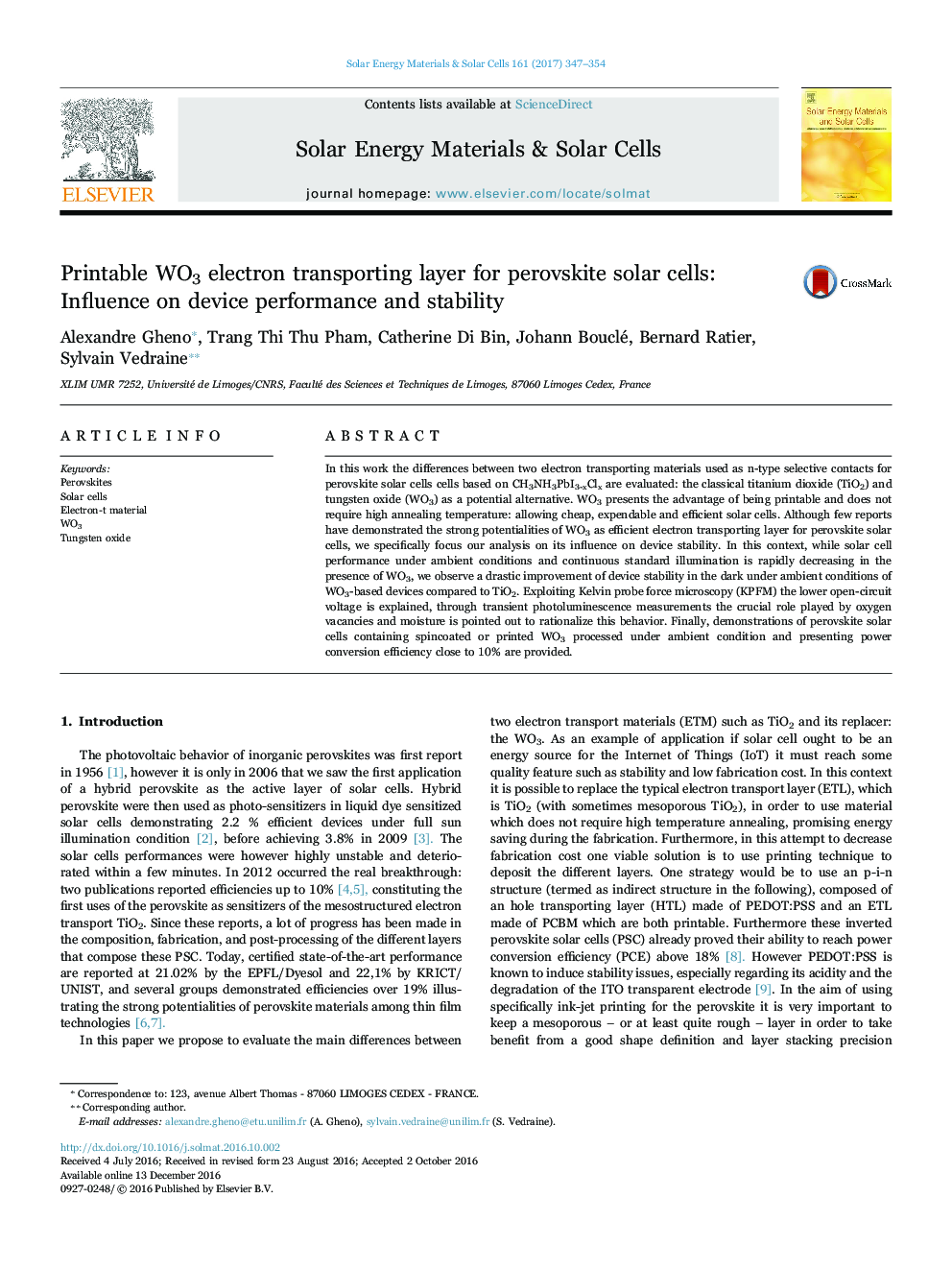| Article ID | Journal | Published Year | Pages | File Type |
|---|---|---|---|---|
| 6457048 | Solar Energy Materials and Solar Cells | 2017 | 8 Pages |
â¢Investigation on the device performance and stability of the WO3 compared to that of the classical TiO2.â¢Proposed explanation of the effect of humidity and the nature of the electron transport layer in the stability of perovskite solar cells.â¢Inner layers of perovskite solar cells now totally printable and low-temperature annealable.â¢Perovskite solar cells with printed electron transport layer providing an efficiency close to 10%.
In this work the differences between two electron transporting materials used as n-type selective contacts for perovskite solar cells cells based on CH3NH3PbI3-xClx are evaluated: the classical titanium dioxide (TiO2) and tungsten oxide (WO3) as a potential alternative. WO3 presents the advantage of being printable and does not require high annealing temperature: allowing cheap, expendable and efficient solar cells. Although few reports have demonstrated the strong potentialities of WO3 as efficient electron transporting layer for perovskite solar cells, we specifically focus our analysis on its influence on device stability. In this context, while solar cell performance under ambient conditions and continuous standard illumination is rapidly decreasing in the presence of WO3, we observe a drastic improvement of device stability in the dark under ambient conditions of WO3-based devices compared to TiO2. Exploiting Kelvin probe force microscopy (KPFM) the lower open-circuit voltage is explained, through transient photoluminescence measurements the crucial role played by oxygen vacancies and moisture is pointed out to rationalize this behavior. Finally, demonstrations of perovskite solar cells containing spincoated or printed WO3 processed under ambient condition and presenting power conversion efficiency close to 10% are provided.
